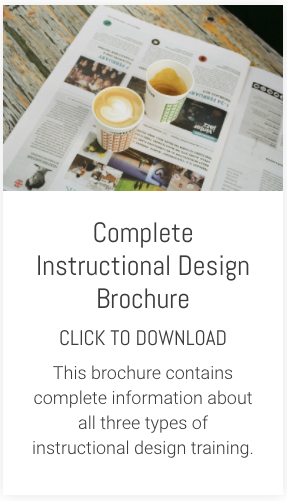I think there are many people in an L&D role who spend their days quietly tearing their hair out in frustration. They are what I call the order-takers. They came into the profession, like most of us do, because they like and care about people. They believe that learning can (and should) make a meaningful difference in someone’s professional life and career. Perhaps they experienced this in their own lives and wanted to help others achieve the same.
But somewhere along the way, something went horribly wrong. The job they thought they would be doing wasn’t the job they actually found themselves doing.
They became a harassed (and not very well-respected) internal supplier. Taking orders for courses and workshops others demanded from them. Courses and workshops that satisfy the demands of the order-giver but don’t do much to benefit the learners or the organisation they work in.
Perhaps this describes your situation right now. Or perhaps you’ve been there, done that and escaped to pastures new. Either way, being caught in a cycle of delivering training that doesn’t really solve problems and doesn’t really improve workplace performance is deeply frustrating and ultimately, very demotivating.
I’ve worked with scores of L&D teams over the years and witnessed people caught in the order-taking trap in a variety of sectors and industries. Almost everyone wants change. But how? How can we make the impact and build the influence that we keep saying we want, if just delivering excellent training is not enough.
The truth is, we need to get better at enabling performance. Which means getting much, much closer to our learners’ real moments of need. For example, when someone is:
- facing a new challenge on the job
- making a decision under pressure, or
- trying to apply a skill they should remember, but can’t quite recall
Those are the moments where performance can either bumble along as always or start to excel given the right support. Things like a timely nudge; a helpful prompt; a short, smart answer that moves someone forward, in the flow of work.
I learnt the importance of supporting those moments of need about 15 years ago, during a workshop run by Jim Kirkpatrick. And since then, I’ve spent years deeply frustrated by the fact that the concept is simple; but effective implementation of that concept is not.
However, that frustration is no more. Right now, I’ve finally found a way to do something I’ve wanted to do for years. A way to help L&D professionals design and deliver intelligent, contextual support for those very moments of learner need just described above.
This is not about trying to replace the learning experiences we already do well. It’s about adding a layer of performance-first thinking that gives our work more credibility, more relevance, and yes, more respect.
The future of L&D isn’t about smarter content. It’s about smarter integration with how workplace performance actually flows.
So, this is my new mission. And over the coming weeks, I’ll be sharing more about the journey that’s got me here — and the tools we’re building to help others add that layer of performance-first thinking.
If any of this resonates and you’ve felt the same frustrations, then I hope you’ll come along with me.
And if you would like a more personal take on this new mission of mine? I’m keeping a ‘behind the scenes’ diary of this new journey. You can follow the story here.











